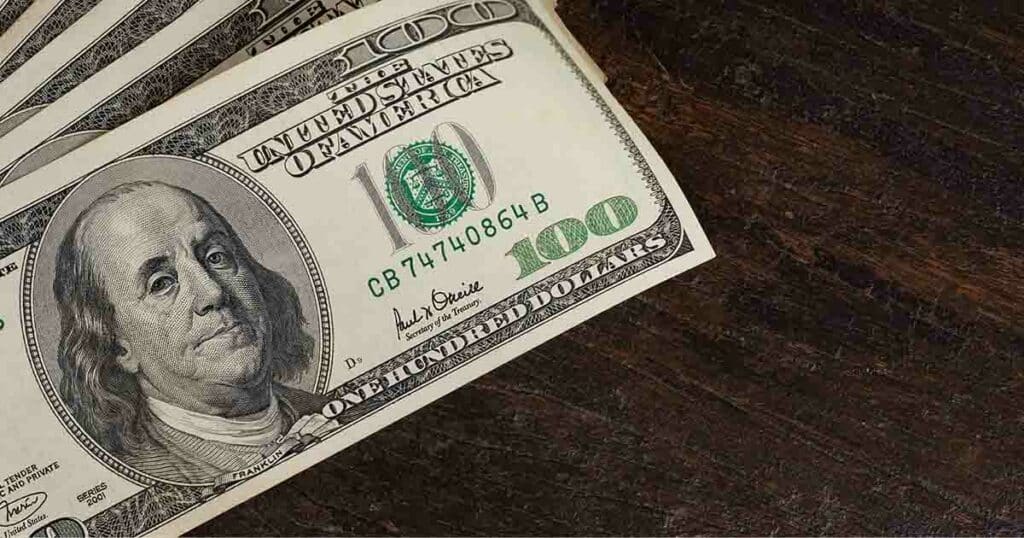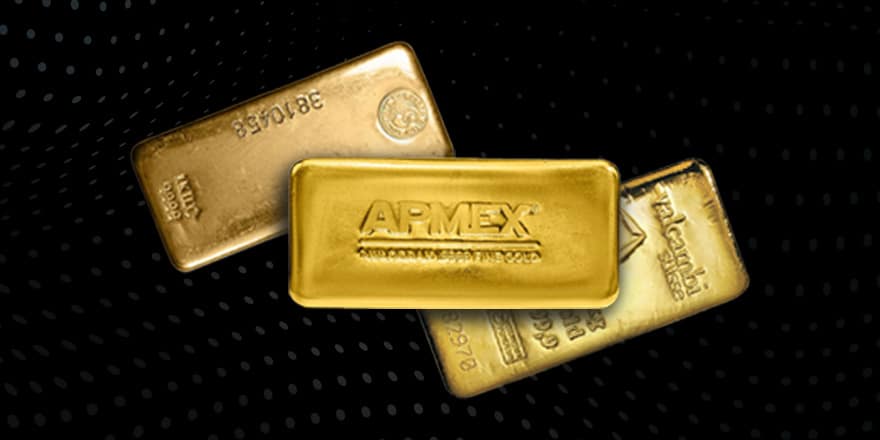
With the common mention of BRICS and dedollarization in the news cycle over the last few years, you may be wondering what is dedollarization? Simply put, dedollarization is the process of ending reliance on the U.S. dollar as the primary currency in the global economy.
The Might of the U.S. Dollar
The U.S. dollar has been the world’s dominant reserve currency for over 75 years, ever since the Bretton Woods Agreement of 1944 established the dollar as the primary currency for international trade and finance. After World War II, the value of the U.S. dollar was backed by gold. However, in the 1970s, the gold standard ended, and the petrodollar system emerged. The petrodollar system started when oil producing countries agreed to sell their oil in U.S. dollars only. This created a high demand for U.S. dollars globally since all countries needed dollars to buy oil.
The U.S. dollar’s status as the dominant global reserve currency provides economic and geopolitical advantages to the United States, including increased demand for dollars that enables persistent trade deficits financed by foreign lending. However, some argue this “exorbitant privilege” has contributed to offshoring of manufacturing. While the dollar’s advantages have promoted global trade and investment for decades, viable alternatives and dedollarization could threaten uncertainties.
Breaking Dollar Dependence
In recent years, some countries have taken steps to avoid using the dollar. Motivations behind dedollarization vary, but most stem from concerns about overreliance on the dollar and a desire to reduce exposure to U.S. monetary policy or potential sanctions.
BRICS, an acronym for Brazil, Russia, India, China, and South Africa, is an association of major emerging economies that plays a crucial role in the global economic landscape. In recent years, BRICS has shown an increasing interest in dedollarization. Each nation has its own potential benefit.
- Brazil: Dedollarization can reduce dependency on USD, mitigating exchange rate risks, and fostering domestic currency stability, enhancing Brazil’s economic sovereignty.
- Russia: Moving away from the dollar can shield Russia from the impact of US-led sanctions, fostering economic independence and potentially boosting trade within the BRICS nations.
- India: Dedollarization can stabilize the rupee, reducing vulnerability to global currency fluctuations and encouraging trade diversification with BRICS members using local currencies.
- China: Reducing reliance on the dollar can enhance the internationalization of the Chinese yuan, strengthening China’s global economic position and promoting bilateral trade settlements with other BRICS nations.
- South Africa: Dedollarization could safeguard against currency volatility, promoting stability and potentially enhancing South Africa’s regional economic influence by encouraging trade in local currencies within the BRICS bloc.
Is Dedollarization Possible?
Some claims say dedollarization is impossible due to the United States GDP is too large to be overthrown. However, the combined GDP of the original of BRICS countries is something to consider.
| Country | GDP |
| United States | 26.9 Trillion U.S. Dollars |
| Brazil | 2.1 Trillion U.S. Dollars |
| Russia | 1.9 Trillion U.S. Dollars |
| India | 3.7 Trillion U.S. Dollars |
| China | 17.7 Trillion U.S. Dollars |
| South Africa | 380.9 Billion U.S. Dollars |
| BRICS Nations Total | 25.7 Trillion U.S. Dollars |
While the combined GPD isn’t more than the U.S. at the time of writing this, the BRICS nations certainly have enough economic influence to impact the U.S. dollar.
China makes up approximately 70% of the economic power of BRICS. For years, China has sought to internationalize its currency, the renminbi. A vital part of this strategy is denominating commodities like oil and natural gas in renminbi instead of dollars. For example, in 2018, China launched renminbi-denominated crude oil futures contracts on the Shanghai Futures Exchange. The contracts expose foreign investors to the renminbi and allow China to pay for imported oil in its currency.
Russia, another prominent dedollarization advocate, has required large Russian companies to maintain a certain level of euro reserves. It has also transferred some national wealth reserves from dollars to euros, gold, and Chinese yuan assets. Russian President Vladimir Putin has stated he believes the dollar’s dominance as a settlement currency is an economic threat, as it enables U.S. sanctions. These talks have intensified as sanctions have been imposed upon Russia since it began a military operation against Ukraine in 2022.
Ways Countries Are Practicing Dedollarization
In addition to currency swap agreements between central banks, countries can reduce dependence on the dollar by trading with each other directly in local currencies. For example, India has started paying for Iranian oil imports in rupees. China and Russia also increasingly settle bilateral trade in renminbi and rubles. These local currency transactions eliminate the demand for dollars to facilitate trade.
International organizations have also participated in dedollarization efforts. In 2009, nine countries within the Association of Southeast Asian Nations (ASEAN), China, Japan, and South Korea agreed to increase regional currency swap arrangements and bilateral trade in local currencies. The goal was to insulate Southeast Asia from liquidity crises. The Eurasian Economic Union between Russia, Belarus, Armenia, Kazakhstan, and Kyrgyzstan have also supported efforts to conduct member trade in rubles and other local currencies rather than dollars.
At a summit in August of 2023, Brazilian President Luiz Inacio Lula da Silva spoke of a single currency for BRICS nations. While there are no concrete plans for the currency, the presentation of the idea is enough to guarantee future conversation. After inducting six new nations into the association during the summit, BRICS now comprises over 40% of the global population. This means the group of countries can have a significant impact on dedollarization.
Dedollarization and Precious Metals
Dedollarization is a concept that has been gaining significant attention in finance and economics in recent years. It refers to the process of countries and individuals reducing their reliance on the U.S. dollar as the primary global reserve currency. This trend has a significant impact on precious metals, such as gold and silver.
Dedollarization often leads to increased demand for precious metals. Investors and central banks turn to gold and silver as a store of value and a hedge against currency devaluation, making them essential components of diversified portfolios. Precious metals have historically played a crucial role during economic uncertainty and geopolitical instability, and in an era of potential dedollarization, their value remains evident.

Precious metals are often viewed as reliable stores of value; therefore, gold and silver have gained significance in BRICS nations’ efforts to diversify their foreign exchange reserves. By increasing their holdings of precious metals, BRICS countries aim to mitigate the risks of a single currency and strengthen their economic stability. This underscores the growing recognition of the intrinsic value and long-term stability of precious metals, making them an attractive option for investors looking to safeguard their wealth amid the shifting dynamics of global finance. Additionally, the 2023 proposal of a single currency by the BRICS association could be backed by a basket of commodities, including gold.
Effects of Dedollarization
The high inflation and potential financial crisis facing the United States have led some countries to accelerate efforts towards dedollarization. The overprinting of dollars and ultra-loose monetary policy by the Federal Reserve has raised concerns about the long-term value of the dollar as the global reserve currency. As mentioned, countries like China and Russia have already been taking steps to reduce their dependence on the dollar.
The current economic turbulence has given new momentum to these efforts. More nations are entering into bilateral currency swap agreements and discussing mechanisms for trade that avoid the dollar. There is concern that the U.S. is undermining confidence in the dollar’s stability as the keystone of global finance. Unless the U.S. gets its economic house in order, the dollar’s role may gradually decline as more countries look to insulate themselves from dollar volatility by dedollarizing parts of their economic relationships. The long-term implications of this accelerating trend could significantly reshape the international monetary system.
A diminished status for the U.S. dollar in global trade and finance would reduce demand for dollars, potentially weakening the currency over time. This could drive up interest rates, inflation, and borrowing costs in the United States as easy money from global dollar demand dries up.
Geopolitically, it could hamper the U.S. government’s ability to impose financial sanctions as targeted nations turn to alternative currencies and mechanisms. The loss of dollar dominance could force the U.S. to operate on a more multilateral basis with other major economies rather than exerting unilateral financial power. This could benefit ascendant economies like China while eroding U.S. influence. It may also spur greater global use of alternative currencies like the Euro and the Chinese yuan. The transition risks economic turbulence, as replacing the entrenched dollar system will require significant adjustments. But if dedollarization gathers steam, it could reshape how money and finances work globally. The era of unchallenged dollar hegemony that has existed since WWII may end.
The Dollar Still Dominates, For Now
Despite these initiatives, replacing the dollar’s dominance will take a lot of work. The dollar remains the world’s preferred reserve currency due to the unparalleled size, strength, and stability of U.S. financial markets. In times of crisis, global investors still flock to the liquidity and safety of U.S. Treasuries. Nearly 60% of international foreign exchange reserves are held in dollars, compared to only around 20% in euros, the second-most held currency.
Network effects reinforce the dollar’s dominance, used in almost 90% of foreign exchange transactions. Companies are often reluctant to abandon the dollar because it remains the currency most used in international business. Any dollar replacement would likely require decades to develop the scale necessary to challenge the greenback fully.
For the foreseeable future, the dollar looks set to retain its position as the primary global reserve currency. But dedollarization efforts show that nations seek to reduce dependence on the dollar where possible. This reflects their desire for greater control over financial stability and relief from the influence of the United States on foreign policy.





